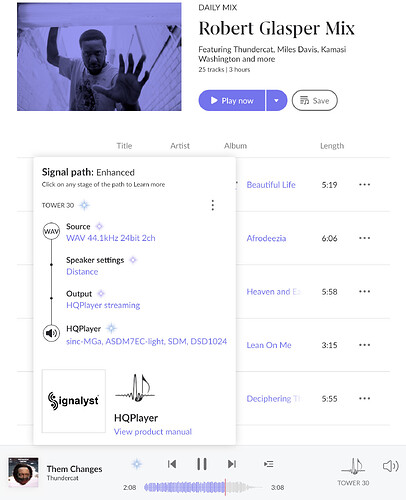Those errors for example generate signal dependent distortion on transient attacks. It breaks waveform shape of the initial attack. In addition, such errors create signal dependent modulated noise that obscure nearby real signals. Thus you get extra “sheen and shimmer” on top end.
That’s fantastic, thank you. Have your listening/measurements confirmed that this DAC does in fact operate in DSD Direct and thus allow for bit-perfect signal? If so, are you personally happy with what you’re hearing, given your experience with various other gear?
I suspect it has same DAC chip controller firmware code as DL300, which is not working correctly.
Yes, it operates as expected at DSD128 and DSD256 rates.
I like the device and it has a built-in NAA support as well.
Ehm, I’m a bit lost on context here. Same what?
Will check soon.
For DL300 what kind of funky output does the buggy controller firmware cause?
I can look for similar pattern
Nothing makes sense… I tried and not possible. I hope you get well soon!
1x=poly-sinc-gauss-long
Nx=poly-sinc-gauss-hires-lp
What is your output? Over wired ethernet to some network endpoint?
Remember that listening to delta, without the other frequencies, is not same thing as listening the whole. It may take some practice to recognize the errors though, once you know what to look for it is easier.
But of course it always depends on the material and person as well, so it is hard to generalize.
Some times ROON generates surprizingly nice daily mixes. Today is cool Rober Glasper Jazz mix for me…
Sinc-MGa / 7EC-Light suits nicely !
Now with Embedded 5.3.0, you can change the filter/dither/modulator on the fly. Nice.
Thanks for that!
** using HQPlayer Client
Yeah this is awesome. Makes it far easier to A/B filters and modulators.
@jussi_laako can you comment on the new modulators and dsd512? Unfortunately the clocks I’m using are far better sounding than the ones I can get for 1024 (Ian Canada sc-pure) so I am stuck to dsd512.
Also would love any technical information about the new modulators vs the prior multistage and 7ec super 512fs. I really appreciate the technical side ![]()
Not sure what you mean?
New modulators are designed to leverage DSD1024, DSD2048 and higher. These are designed to counter the adverse effects of increasing clock rates and also provide lower CPU loads to effortlessly generate DSD1024 for example from my MacBook Pro with M1Max. SNR is lower than with regular modulators though, but increases with increasing output rate and enough for most normal cases.
Curious if you could expand on that. I understand that it’s difficult for DAC’s to maintain accurate clocks at higher rates, thus there is likely some sweet spot that is dac dependent, but how are you able to fix or counter that?
@jussi_laako thanks for the fast reply… Specifically can I use for dsd512 without any negative effects? Is there benefit at dsd512? What are we. Talking in terms of Snr vs the 7ec super 512fs?
Also can you comment on your current cuda offload, specifically does the player use pure fp64 or can it utilize the newer tensor cores using fp16 cores and combing for calculations? This matters greatly when deciding best gpu for maximum performance. Does hq player use new nvidia libraries that take advantage of using multiple fp16 cores?
It is not about accurate clocks, but about shorter sample periods and more frequent state switching. Time ratio between the time spent changing state vs the time spent maintaining the state gets smaller. Since the switching elements have a finite switching speed.
One more question @jussi_laako (REALLY appreciate your comments) can you expand again on the fft length. I believe there is a trade with time domain and frequency domain with longer or shorter fft length and how fast or slow the roll off is.
No, AHM cannot be used for DSD512. Minimum DSD1024, preferably more.
Depends how you look at it… ASDM7EC-super 512+fs one is something like 100 dB below analog noise floor. Just talking about some theoretical numbers is not necessarily fruitful.
64, 80, 128 and arbitrary precision as necessary.
No, that is not possible…
@jussi_laako thank you for the above… But how is above 64 possible when there are only up to fp64 cores? If you use for example a gtx 4090 even it’s almost all fp16 performance and then using multiple fp16 for higher precision performance (although fp64 is severely limited on purpose for people to buy more expensive data center cards for Ai ect)
Something doesn’t make sense where fp64 performance for 4090 is 1.7tflops ish but gp100 is 5.5tflops and the 4090 can do a few combo from others I can’t with the gp100 (although this is still far far better performance to dollar value)
